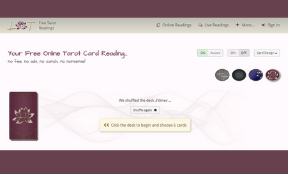Why did we chose these historical theme?

The reason that we choose these four historical themes was that on four decades either the cards themselves, or how they were interpreted, shifted suddenly. None of these changes broke from the past—every era of Tarot history builds on what came before and lays the foundation for future developments. These four periods are:
1700s: The Tarot de Marseille:
Somewhere in France (probably Lyon) in the late 16th century, someone printed a Tarot deck that became the standard deck that’s still in use today. A few cards distinguish this deck type: the dogs and crayfish under the Moon, the Star woman pouring water, and the person in a wreath on the World card. When the game of Tarot became an international favorite, the card images and their numbering were standardized, except in Italy where regional styles continued to flourish. The Tarot de Marseille is the deck eighteenth-century occultists looked at while spinning their Egyptian fantasies. Fortune tellers read with this deck in taverns and salons. French and English esotericists assigned Hebrew letters and pathways on the Tree of Life to these cards. Because the imagery has remained so consistent, the collective wisdom of three centuries of card readers has accumulated around these cards. Every modern deck, no matter how radically redesigned, rests on a Tarot de Marseille foundation.
1800s: The Occult Tarot in France
In 1781, the public received its first hint that Tarot could be more than just a card game. Antoine Court de Gébelin’s multi-volume book of pseudo-anthropology, Monde Primitif, contained essays on Tarot by himself and Le Comte de Mellet. For the first time in print, the tarot trumps were associated with letters of the Hebrew alphabet. Tarot was now believed to be the Book of Thoth, where ancient Egyptian magi encoded their highest wisdom in a card game to preserve it for millennia. De Gébelin claimed he was the first person to see Tarot’s Egyptian connection. But it’s more likely that the Egypt/Qabala connection had been circulating in occult and Rosicrucian circles for at least a few decades. The Parisian occultist Etteilla was a firm believer in the Egyptian origin of Tarot. He learned card reading from Italian fortune tellers, then began his professional career in 1770. He wrote books on cartomancy (a term he coined), started a school of astrology and Tarot, and laid the foundation for modern card reading techniques. His divinatory meanings for the number cards still have a huge influence on how those cards are interpreted.
1900s: The Golden Dawn
Tarot was virtually unknown in Britain until Kenneth Mackenzie, an English scholar and Rosicrucian with esoteric interests, visited Eliphas Levi in 1861. This visit inspired Mackenzie to invent his own occult lodge, putting Tarot at the center of its teachings while “improving” on Levi’s system. Mackenzie set out the lodge’s teachings and rituals in the Cipher Manuscript written on artificially aged paper to fool people into believing the teachings had an ancient pedigree. Mackenzie died before he could carry out his plans. His papers were acquired by William Westcott and Samuel L. MacGregor Mathers who implemented Mackenzie’s ideas by creating the Hermetic Order of the Golden Dawn in London in 1888. Mathers expanded on the teachings of the Cipher Manuscript in Liber T, and by putting Tarot at the center of the Order’s rituals.
2000s: The Waite Smith Tarot
This deck (also known as the Rider Waite Tarot) was created by two former members of the Golden Dawn. A. E. Waite was a freelance writer with occult interests who translated Eliphas Levi’s books into English. After leaving the Golden Dawn, he renounced magic and identified as a Christian mystic. P. C. Smith was a magazine illustrator and theatrical set designer who channeled paintings while in a trance. In 1909, Waite hired Smith to illustrate his deck. Smith seems to have enjoyed a fair amount of independence designing the minor arcana, while Waite guided the design of the major arcana. These cards are a mash-up of Levi’s Egyptian flourishes, Waite’s Christian symbolism and the Golden Dawn’s astrological attributions. In spite of being created by former Golden Dawn members, the deck has little in common with the Order’s official deck. Examples of the eclectic mix of symbols in this deck: The Emperor holds an ankh, while Aries’ rams decorate his throne. The Lovers card shows Adam and Eve in the Garden of Eden, complete with apple tree, snake and angel. The Wheel of Fortune has Egyptian figures, Hebrew letters and Christian evangelists.
